By Rick VanSickle
I have watched from afar as Prince Edward County has seemingly grown up overnight into a major Canadian wine region.
My first impressions after a quick trip over a jam-packed day were;
1) There are some damn fine wines being crafted from winemakers devoted to quality.
2) It’s a lot more rustic than I had imagined it to be, sort of the complete opposite of Niagara.
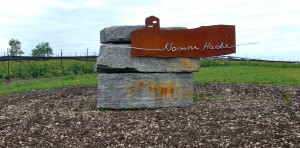
But it’s rustic in a charming and good way. It reminded me of the Okanagan Valley, spread out over great distances, before the big wineries moved in and the tourists were few and far between. The only visitors were those who came to simply taste great wine and stuff as much as they could into their trunks before heading home.
Driving from one end of the County to the other is a good hour’s drive with not a lot of wineries along the way, at least not in the Niagara sense. What you see (or don’t see) are small tasting rooms, a lot of barn-like structures (some renovated to varying degrees), pastoral beauty, not a lot of vineyards and the occasional modern facility that’s well suited for tour buses and larger crowds.
My feeling is that pretty much all the energy in the County goes into making wine. Which is exactly what a relatively new wine region needs to do — make great wines and the crowds will come. Establish a reputation, and the people will knock down your door no matter what it looks like.
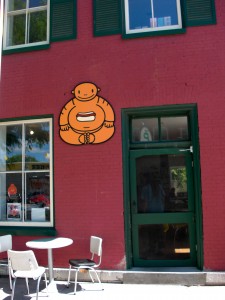
Our quick trip to PEC, with Suresh Doss, publisher of Spotlight Toronto and bonafide lover of most things County, at the wheel, didn’t allow enough time to enjoy the reputed culinary aspects of the region, which I’m assured is a major part of the experience. But I did see a lot of great cafes and eateries in Picton and in many of the small towns along the wine route.
Our only stop to eat was at the famous Buddah Dog, a funky gourmet hotdog cafe that supports local produce and makes the best dog (only pure meat goes it these artisan wieners) I’ve had in a long time. The single servings are small (hey, they’re only $2 each plus whatever you want on it) but, my, are they tasty. I ordered a couple while Suresh chowed down on three of them, all smeared with delicious fixings and local cheeses. Buddah Dog restaurant locations are also in Toronto and Collingwood.
Our first wine stop was at the much-heralded Norman Hardie winery where we were greeted enthusiastically by “Norm” himself. I loved the simplicity of the winery, which Hardie calls “simple modern barn architecture,” and the feel of the tasting room and surrounding vineyards.
Hardie was eager to show off his winery, even with guests arriving for a special lunch in the cellar.
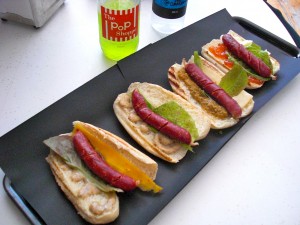
We started with a look at the vineyard site which, of course, was the key for Hardie when he was searching for the perfect soil to make his beloved pinot noirs and chardonnays. His vineyard sits on a limestone shelf and has the clay and calcareous limestone soil that is “as close to Burgundy as you can get.”
Hardie is a pinot freak, loves the Burgundian style, and is highly motivated to make wines that are as close to that style as he can make them. He believes PEC is the perfect location outside of Burgundy to make nuanced, finessed pinots that show a special sense of place and he has staked all that he has on that pursuit.
The biggest hurdle in the way for County wine producers has always been the severe winters that ravish vines, claiming large numbers with winter kill each and every year. The way to avoid the yearly loss was to bury the vines each fall and reclaim them in the spring. It was a struggle to find the most effective strategies to do this without it breaking the bank and passing the cost onto consumers. Hardie and other growers have learned through trial and error how to do this without adding a lot of money to the finished wine. The process now puts about $1.25 per bottle to the cost of County wines.
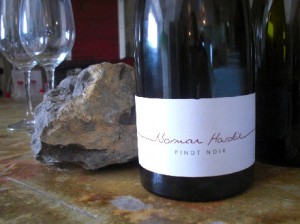
Hardie grows pinot noir, pinot gris and chardonnay in the County and sources pinot noir, chardonnay and riesling from Niagara, vineyards he has a hand in managing.
The duel sourcing of fruit (ranging from 60-70% County fruit to Niagara depending on the vintage) is like an insurance policy, says Hardie. If he has a bad vintage in PEC he will always have a good source of fruit from Niagara. Hardie’s reserve wines are a blend of County and Niagara grapes, which some scoff at, claiming that a mixture of two regions is an affront to terroir-driven wines. Hardie isn’t the kind of guy to bow to such criticism. His mission is to make the best pinot and chardonnay he can from the grapes he has access to.
And, right now, his best stuff is a blend of two very good regions. Like it, or lump it. It’s just the way it is.
But while Hardie has one foot in Niagara and the other in PEC, his heart and is loyalty is definitely all County.
“I much prefer the County,” he says. “It’s agricultural, pastoral. There’s no traffic here. It’s a lot softer, gentler.” All that and Hardie points out that the location is perfect — four hours from Montreal, two from Toronto and three hours from Ottawa, all major metropolitan areas within easy driving distance.
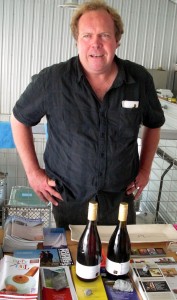
Hardie seems most comfortable in his specially-designed winery. It’s a big, open space with high ceilings and lots of light pouring in. The main feature is a gravity flow winery system that brings the crush down to the winery without bruising the fruit along the way.
The centrepiece of the winery is the barrel cellar that maintains a natural 5C temperature in the winter (much warmer in the summer) when his sleeping wines need the cool temps most. He uses only French oak barrels and has room for 250 barrels in the cellar. That’s about the limit of where Hardie wants to get to — a total production of 4,500-5,000 cases. For him, it’s not about volume, “it’s purely good quality grapes,” he tells us.
Oak is key to Hardie’s wines, but they’re made with a deft touch. “I never want someone to say my wines are oaky.” He uses oak as a spice, and it’s never overdone.
Here’s what we tasted with Hardie.
Norman Hardie Melon de Bourgogne 2009 ($19) — Crisp and flavourful wine with apple/floral notes and wonderful acidity. A match made for oysters.
Norman Hardie Riesling 2009 ($21) — With fruit sourced in Niagara, Hardie’s riesling is a mineral-driven lime and citrus laced wine with a firm acidic backbone. There’s a touch of peach/quince flavours amid all that juicy citrus fruit.
Norman Hardie County Chardonnay Unfiltered 2008 ($35) — A very fine chardy that shows citrus fruits, fine subtle oak tones, minerals, focused flavours, textured on the palate and pure elegance from stem to stern. Burgundian in style, County by birth.
Norman Hardie Chardonnay Unfiltered Niagara 2008 ($35) — British wine critic Jancis Robinson went “gaga” over this wine at a recent tasting in London, England, of Ontario chardonnays. For good reason, this Niagara offering shows opulent pear, apple, tropical notes on the nose and a nice mineral edge throughout. It’s held together with fine oak and vanilla mousse all neatly balanced.
Norman Hardie Chardonnay Cuvee L 2008 ($49) — The top-tier Cuvee L, so-named as a homage to Hardie’s late sister Lisa, is a blend of the best of the best Chardonnay from both Niagara and the County. The 2008 cuvee is 65% Niagara fruit and the rest from the County. This is a very fine wine, leaning toward luxurious and textured with tropical/pear fruits and spurts of citrus mingling always with that distinct flinty-minerality. The oak adds spice but does not overpower the wine. A nice, long finish.
Norman Hardie Pinot Noir Unfiltered Niagara 2008 ($39) — The fruit for this exquisite pinot is exclusively from low-yielding grapes grown on the Beamsville Bench in Niagara. It shows both power and grace from the vivid black cherry, nuanced earthy bits, fine oak and spice that travels through the entire length of this superb wine. I love the bones on this wine, structured, yes, but also quite approachable.
Norman Hardie Pinot Noir Cuvee L 2007 ($69) — This exactly the same regional composition as the Cuvee L Chardonnay — 65% Niagara pinot and 35% County pinot. This is the last of the fabulous 2007 vintage left of Hardie’s lineup, which is surprising because it’s such an amazing wine. Simply a gorgeous wine that shows cran-cherry fruits, mocha spice, plush tannic structure and silky smooth in its delivery. To me, what Niagara pinots can do when winemakers show restraint in a big, hot vintage.
Watch for Part II of The County with visits to more wineries and a trip to The County Cidery


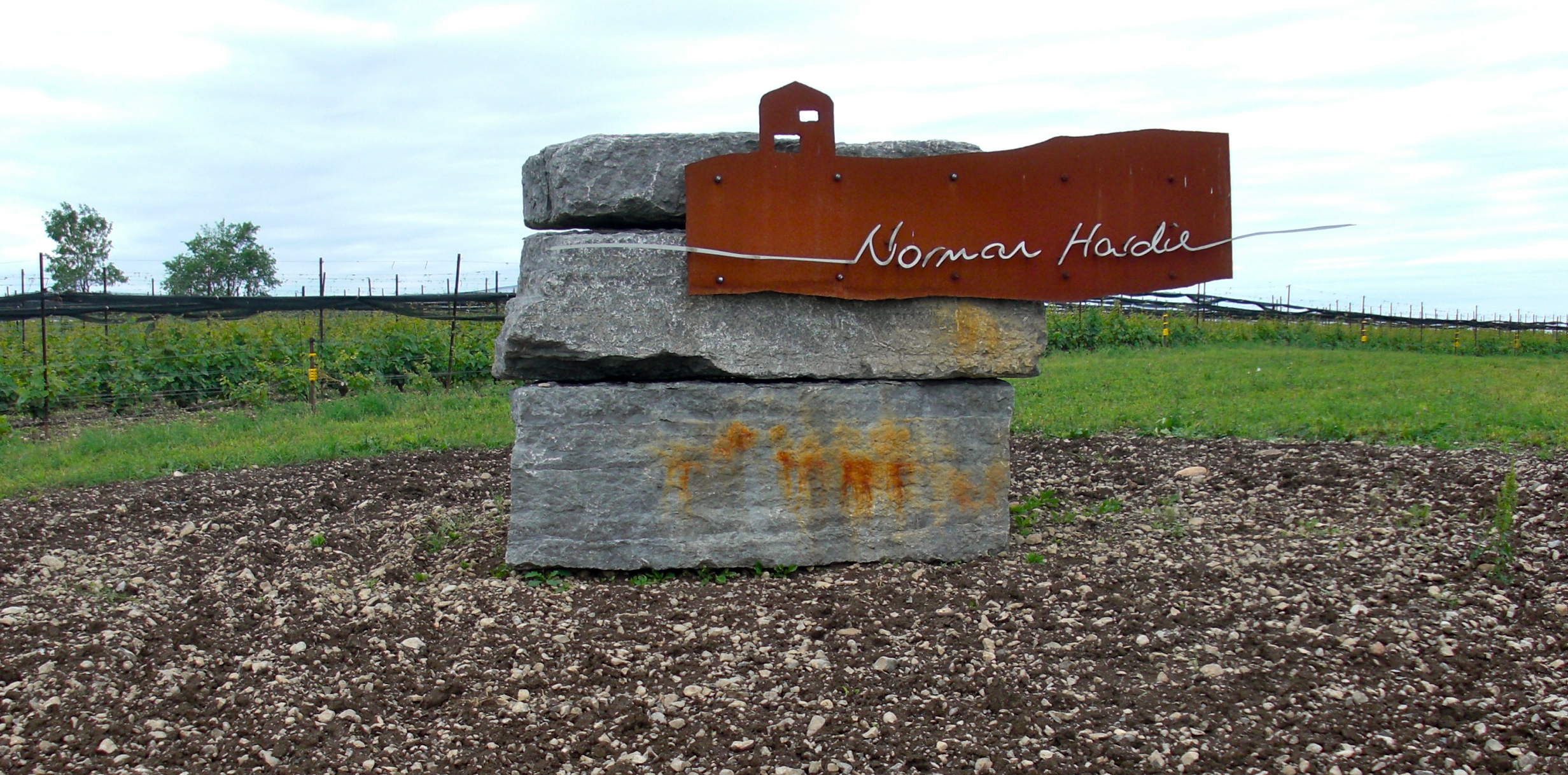




[…] This post was mentioned on Twitter by . said: […]
[…] Beginning note: I have watched from afar as Prince Edward County has seemingly grown up overnight into a major Canadian wine region. After a day-long trip recently with Suresh Doss, publisher of the fantastic eat-drink website, Spotlight City , I was impressed with the wines, the raw beauty of the region and, perhaps most importantly, the people who are making it all happen. This is Part II of our visit to the County. Part I, focusing on the wines from Norman Hardie, is posted here […]